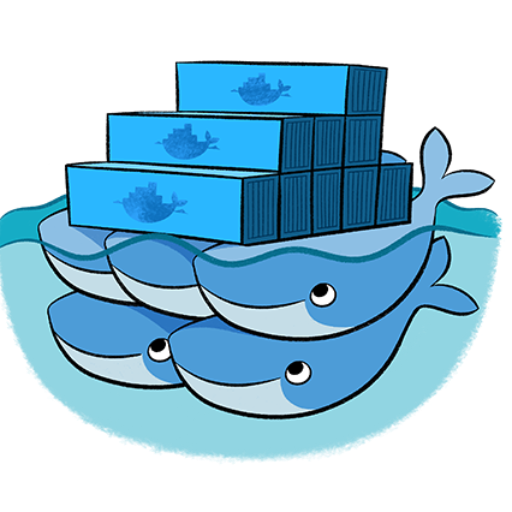
Docker and Docker Swarm Assistant - Docker Swarm Management

Hello
Simplify container orchestration with AI.
Generate dockerfile for nextjs
Generate dockerfile for my vite project using vue3
How to setup docker swarm
Get Embed Code
Overview of Docker and Docker Swarm Assistant
Docker and Docker Swarm Assistant is designed to facilitate the deployment, management, and scaling of containerized applications using Docker and Docker Swarm. Docker, a platform-as-a-service (PaaS) product, uses OS-level virtualization to deliver software in packages called containers. Containers are isolated from each other and bundle their own software, libraries, and configuration files; they can communicate with each other through well-defined channels. Docker Swarm is an orchestration tool for Docker that allows you to manage a cluster of Docker engines as a single virtual system, enabling you to deploy your applications across multiple hosts, manage container replication, and scale your application dynamically according to demand. An example scenario illustrating these aspects would be a web application deployment, where Docker packages the web app and its environment, while Docker Swarm manages its deployment across a cluster to ensure high availability and load balancing. Powered by ChatGPT-4o。

Core Functions of Docker and Docker Swarm Assistant
Containerization and Isolation
Example
Packaging a Node.js web application into a Docker container.
Scenario
Developers can encapsulate their web application and its environment into a container, ensuring that it works uniformly across any Docker-supported platform, eliminating the 'it works on my machine' problem.
Cluster Management and Orchestration
Example
Automatically scaling a microservices-based application using Docker Swarm.
Scenario
Docker Swarm enables users to define desired states for their containerized services (like the number of replicas), and it automatically adjusts the system to meet those states, such as scaling services up or down based on demand.
Load Balancing
Example
Distributing incoming traffic among containers in a Docker Swarm cluster.
Scenario
Docker Swarm provides a built-in load balancing feature, automatically distributing client requests evenly across all containers in the service, improving the application's availability and responsiveness.
Networking
Example
Creating overlay networks for containers to communicate securely across Docker Swarm nodes.
Scenario
This allows containers to communicate with each other across multiple Docker hosts, encapsulated in a virtual network, enhancing security and connectivity in distributed applications.
Service Discovery
Example
Using Docker Swarm's internal DNS to facilitate service discovery among containers.
Scenario
Containers can discover each other and communicate across the swarm using DNS names instead of IP addresses, simplifying configuration and scaling of services.
Target User Groups for Docker and Docker Swarm Assistant Services
Software Developers
Developers benefit from using Docker for its simplicity in creating, deploying, and managing applications. The isolation provided by containers ensures consistent performance and functionality across environments.
DevOps Engineers
DevOps teams use Docker and Docker Swarm for streamlining the CI/CD pipelines, enabling easy deployment and scaling of applications, and ensuring that the infrastructure and application layers are well integrated and automated.
System Administrators
System administrators can leverage Docker Swarm for managing cluster environments efficiently, ensuring applications are always available, and balancing loads to meet demand without manual intervention.
Cloud Infrastructure Architects
Architects designing cloud infrastructures benefit from Docker and Docker Swarm's ability to deploy applications seamlessly across any cloud, on-premises, or hybrid environment, providing flexibility and scalability.

Guidelines for Using Docker and Docker Swarm Assistant
Begin Trial
Start with a free trial at yeschat.ai, no sign-up or ChatGPT Plus required.
Installation
Install Docker on your machine. Ensure it meets the software requirements and supports the Docker and Docker Swarm environment.
Configuration
Configure Docker Swarm by initializing a swarm and adding nodes. Use 'docker swarm init' and 'docker swarm join' commands as needed.
Deployment
Deploy your services using 'docker stack deploy' command, specifying your stack file to orchestrate containers across the swarm.
Monitoring
Monitor and manage your swarm using Docker's built-in tools or third-party solutions for insights into container health, performance, and logistics.
Try other advanced and practical GPTs
Daily Motivational Quotes
Inspire Your Day with AI-Driven Wisdom

معلم خصوصی لهستانی
Master Polish with AI-powered personalized learning.

Robotic Companion Advisor
AI-Powered Robotic Companion Recommendations

me chat
Ignite Your Creativity with AI

Elderly Companion
Comforting AI-powered companionship for the elderly.

Tutorial para um Software
Empowering Creativity with AI

WCAG Compliance Guide
Empower your web content with AI-driven accessibility

Interrogation Room
Solve mysteries with AI-powered clues.

CT Real Estate Agent
Empowering Connecticut Agents with AI

TONI - Tu asistente musical (Español)
Empowering your musical journey with AI.

Charizzma
Empowering love with AI-driven guidance

Air Conditioning Service Kansas Missouri Ai Aid
Streamlining Air Conditioning Services with AI

Frequently Asked Questions About Docker and Docker Swarm Assistant
What is Docker Swarm Assistant?
Docker Swarm Assistant is a tool designed to simplify the management and orchestration of Docker containers and services across a cluster of machines.
How does Docker Swarm enhance container management?
Docker Swarm provides native clustering functionality, turning a group of Docker hosts into a single, virtual Docker host for improved load balancing, scalability, and fault tolerance.
Can Docker Swarm Assistant help with CI/CD pipelines?
Yes, it can automate the deployment process, making it easier to integrate with continuous integration and continuous deployment (CI/CD) pipelines for seamless software updates.
What are the security features of Docker Swarm Assistant?
It includes automated TLS encryption, role-based access control (RBAC), and network segmentation to enhance the security of containerized applications.
Is Docker Swarm Assistant suitable for beginners?
While it offers advanced features for experienced users, Docker Swarm Assistant also provides a user-friendly interface and comprehensive documentation, making it accessible for beginners.